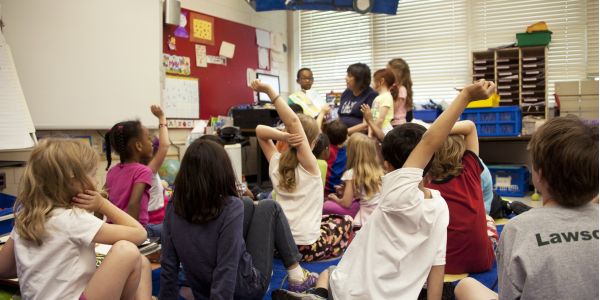One of the key principles of community-engaged research is to involve communities in the process of asking research questions. Doing so enables the research to be more useful and practical in the real world, and also advances equity principles in the conduct of research by putting the affected communities closer to the center of the research pr...
Tips for Communicating About Health Disparities
In a recent study published in Social Science & Medicine, Jiawei Liu and Jeff Niederdeppe examined studies about social comparison framing of health disparities.
How Political Candidates Discussed Racial and Gender Identity in 2022 – and What it Means for 2024
The political discourse surrounding identity is particularly heated in early 2024, as the United States lurches toward another momentous election. Between news coverage of ongoing political attacks on college campuses and corporate diversity, equity, and inclusion issues; persistent attention to the roles of antisemitism and Islamophobia inflaming...
Partisan Differences in Perceptions of Health Disparities in COVID-19
It is now abundantly clear that Republicans and Democrats have divergent views about COVID-19 – as evidenced by partisan gaps in attitudes, beliefs, and even behaviors, like wearing masks or getting a vaccine. Research has also demonstrated that people perceive the concept of health equity through the lens of partisanship. In a new study published...
Comparing Cancer Risks and Screening Rates between Racial Groups in Public Health Messages May Have Unintended Consequences
In a recent study published in Human Communication Research, Jiawei Liu and Jeff Niederdeppe examined the effects of public health messages that feature cancer risk comparisons and screening rate comparisons between Black Americans and White Americans.
Kicking off Another Year of Collaborative Research with Intention and Connection
The Collaborative on Media & Messaging for Health and Social Policy team gathered for a full team retreat in August, hosted at the University of Minnesota in Minneapolis.
What Role Did Local News Play in the Controversy About Masks?
The Covid-19 pandemic posed a particularly difficult challenge for public health communicators because the information environment was rife with partisan cues and messaging that often contradicted or challenged the authority of scientific experts. The media played an ambiguous role in this regard: On the one hand, it served as a conduit for scientific...
News About Food Assistance During the COVID Pandemic Decreased Stigma but Overlooked Racial Inequities, Study Finds
Our COMM team had the opportunity to collaborate with the Berkeley Media Studies Group on an analysis of print and TV broadcast news stories about hunger and food assistance aired in 2021. This blog post was originally published on the BMSG website and examines how equity appeared in news about food assistance from 2021.
Local TV News Coverage of Early Care and Education: Stories About Scandals and (Sometimes) Policy
In April, President Biden signed an executive order that directed federal agencies to seek solutions to the persistent problems of early care and education (ECE) access and lack of affordability. (ECE encompasses the settings where young children receive care from someone other than a family member or their primary caregiver.)
Public Attitudes about the End of the Public Health Emergency: Framing the Consequences
On May 11, the national Public Health Emergency (PHE) declaration by the federal government will end. While this event has major public health implications, broader media and public attention to the event has been limited, likely because at least half of Americans earlier this spring reported that they believed that the pandemic was already over....









